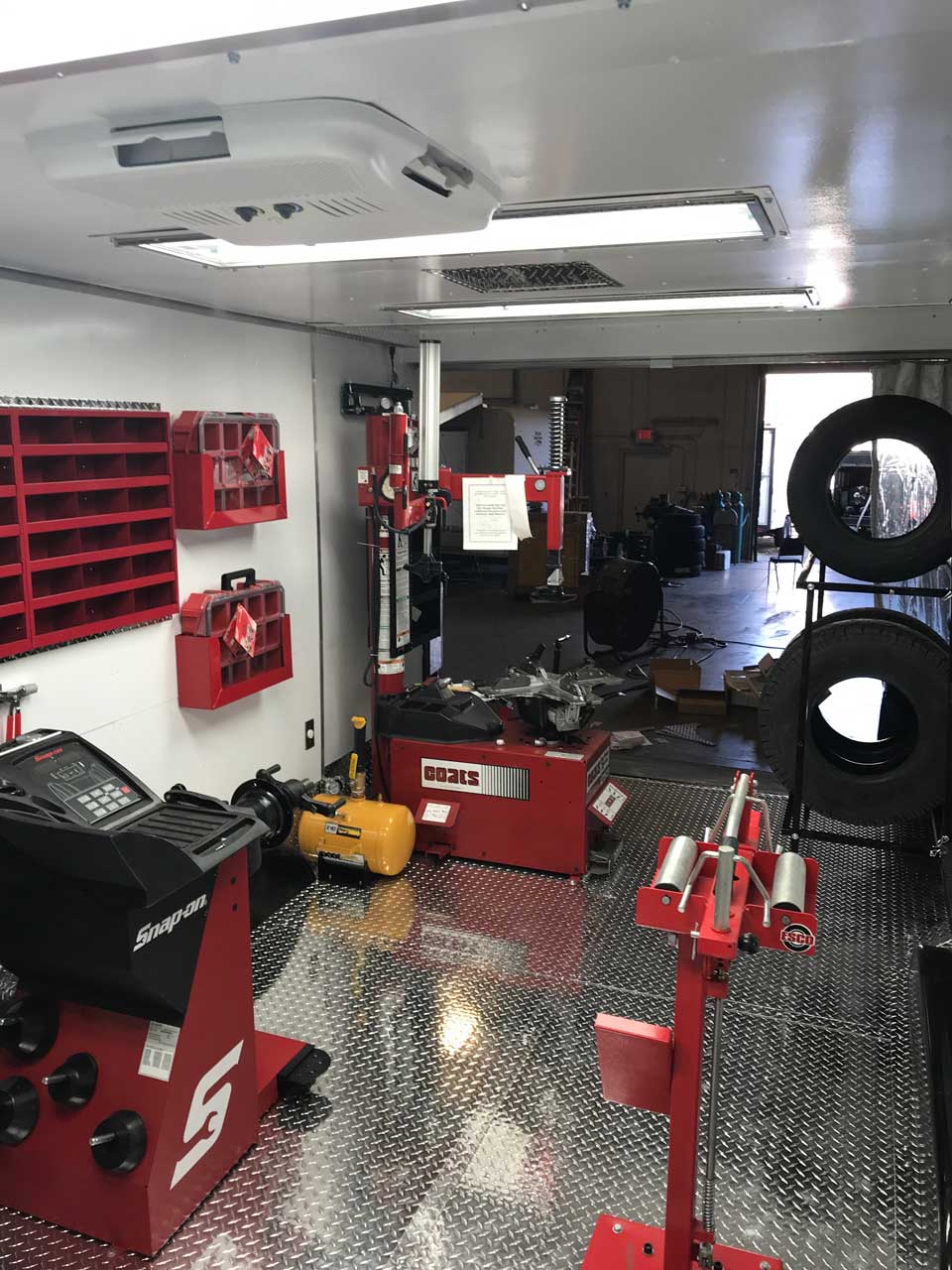Morris Tires: Where GMC Tire Service Meets High Quality
Morris Tires: Where GMC Tire Service Meets High Quality
Blog Article
Tire Solution: The Impact of Weather Condition Conditions
When it comes to making certain optimum efficiency and security on the road, comprehending the influence of weather conditions on tire service is critical. GMC Tire Service. In this discussion, we will discover the detailed connection between climate conditions and tire solution, losing light on the value of weather-specific tire maintenance techniques and considerations.
Warmth and Tire Efficiency
When exposed to heats, tires experience adjustments in efficiency that can significantly affect car safety and security and handling. The heat created from extended driving or heat conditions creates the tire rubber to soften, causing decreased step life and boosted wear. As the rubber comes to be softer, the tire's grasp when traveling reduces, affecting stopping ranges and total grip. In severe situations, extreme warm can even trigger tire blowouts, posturing an extreme security danger to the automobile and its passengers.

Cold Climate Results
Cold weather condition problems can have a significant effect on tire efficiency and safety and security. As temperature levels decrease, tire rubber can harden, resulting in lowered traction on icy or snow-covered roadways. In cool climate, tires might likewise lose air pressure a lot more rapidly, which can influence managing and fuel performance. Additionally, chilly temperatures can create tire sidewalls to tense, boosting the risk of damages from splits or other roadway risks.
To minimize the results of chilly weather condition on tires, it is critical to consistently inspect tire pressure and inflate them to the producer's suggested levels. Using wintertime or all-season tires developed for winter problems can likewise improve grip and hold on icy or snowy roadways. Proper tire upkeep, including regular evaluations for wear and damage, comes to be much more vital throughout chillier months to make sure optimum performance and security.
Rainy Conditions Effect
Tires with damaged treads are more susceptible to hydroplaning, where a layer of water develops up between the road and the tire surface area, leading to loss of grip. To battle this, motorists must regularly inspect their tires for ample tread deepness and take into consideration spending in tires particularly developed for damp conditions.
In addition, stormy weather can anchor also lower exposure, making it testing for drivers to see the road in advance plainly (GMC Tire Service). In such conditions, it is important to change driving speeds as necessary and preserve a safe following range to enable abrupt quits. Properly filled with air tires can also aid in preserving control on damp roadways by supplying better handling and grasp
Snow and Tire Safety
When driving in snowy conditions, having the best tires can make a substantial difference in security and performance. Winter season tires are made with unique rubber compounds and walk patterns to supply better traction on snow and ice compared to all-season tires.

It is crucial to adhere to producer instructions when setting up and using tire chains to prevent damages to the tires and vehicle. By selecting the right tires, maintaining correct inflation, and considering extra traction help like tire chains, drivers can improve their safety and security when browsing snow-covered roads.
Weather-Related Tire Upkeep
When confronted with different climate conditions, proper tire maintenance becomes an essential element of lorry safety and security and performance. Weather-related tire upkeep includes a range of practices focused on ensuring ideal tire function and longevity in different weather condition circumstances. One crucial facet of weather-related tire maintenance is tire pressure law. Changing temperatures can create tire stress to vary, affecting grip and fuel efficiency. Consistently adjusting and examining tire pressure according to manufacturer referrals is vital for secure driving in changing weather. In addition, tire step deepness plays a substantial function in taking care of various weather elements. Tires with adequate walk depth offer better this grip on wet or icy roads, reducing the danger of skidding or hydroplaning. Examining tire walk routinely and replacing tires when walk wear gets to a specific deepness is important for maintaining traction and stability in damaging weather. By prioritizing weather-related tire upkeep, chauffeurs can enhance safety, boost vehicle performance, and prolong the life-span of their tires.
Final Thought
In final thought, climate condition have a significant effect on tire performance and safety. From warmth impacting tire pressure and put on to winter reducing grip, it is important to take into consideration the click here for more weather condition when keeping and making use of tires. Rainy problems can reduce grip and result in hydroplaning, while snow can increase the danger of accidents if tires are not effectively furnished. Weather-related tire upkeep is crucial in ensuring optimal performance and security when driving.
In this discussion, we will explore the intricate partnership between weather conditions and tire service, losing light on the significance of weather-specific tire upkeep methods and considerations.

Report this page